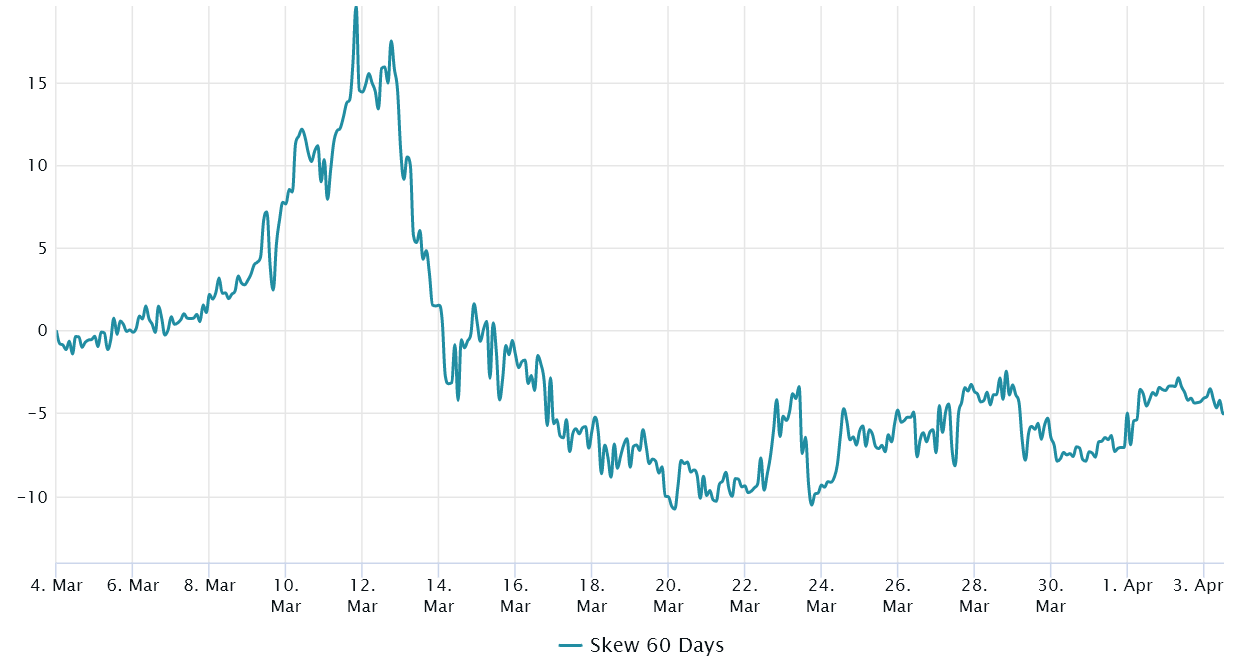Bitcoin (BTC) might have shown strength after successfully defending the $28,000 support amid unfounded rumors about Binance, but an interesting development to note is that BTC is becoming less correlated with traditional markets after the US Federal Reserve elects to provide emergency liquidity to banks.
This change in central bank attitude has caused a change in the trajectory of US Treasuries as traders sought refuge from upward inflationary pressure. Bitcoin appears to be movement agnostic and its price has been hovering around $28,000 for the past week.
Meanwhile, the yield on the 5-year note fell to 3.50% on April 3, down from 3.70% the week before. Higher demand for debt instruments lowers the payment, resulting in a lower yield. The $152.6 billion in outstanding loans from the US Federal Reserve’s support loan program has been the driving factor.
The general public’s lack of confidence in banks has also led them to reconsider what the Federal Deposit Insurance Corporation (FDIC) is and how the Fed no longer controls the trajectory of inflation. The question of whether Bitcoin can serve as a reliable store of value during a crisis remains open, but the 70% gain so far this year certainly proves a point.
Investors are reducing their cash positions
According to Bank of America data, the total assets of money market funds in the United States hit a record $5.1 trillion. These instruments invest in short-term debt securities, such as US Treasury bonds, certificates of deposit, and commercial paper. In addition, fund manager and analyst Genevieve Roch-Decter, CFA, says investors have withdrawn $1 trillion from banks because money market funds offer much higher returns.
Hello, everyone! Since the recent high, total deposits in US banks are down a record $1 trillion. Where did the money go? Much went into money market funds that just hit an all-time high. Who wants to earn 0.3% on a bank account when you can earn 5% on a money market fund? pic.twitter.com/t3RTETIHIA
— Genevieve Roch-Decter, CFA (@GRDecter) April 3, 2023
Although Bitcoin investors view cryptocurrencies as a safe haven against inflation, a recession would reduce demand for goods and services, leading to deflation. Risk rose substantially after the US ISM Purchasing Managers’ Index data for March was released. At 46.3, the gauge hit its lowest level since May 2020, below analysts’ forecast of 47.5, signaling contraction.
According to Jim Bianco, a macro analyst at Bianco Research, this was the 16th time since 1948 that the level had reached such a low point, and in 75% of those cases, a recession followed.
ISM comes out today at 46.3, the lowest since May 2020, the month after the COVID recession ended,
The ISM began to be measured in 1948. As this graph shows, this is the 16th time that the ISM has been 46.3 or lower.
In 12 (75%) of these cases, the economy was in recession or about to… pic.twitter.com/5Pw5zfFOrs
— Jim Bianco biancoresearch.eth (@biancoresearch) April 3, 2023
Let’s examine Bitcoin derivatives metrics to determine the current market position of professional traders.
Bitcoin Derivatives Traders Did Not Withdraw Under FUD
Quarterly Bitcoin futures are popular with whales and arbitrage desks, typically trading at a slight premium to spot markets, indicating that sellers are asking for more money to delay settlement for a longer period.
As a result, futures contracts in healthy markets should trade at a 5-10% annualized premium, a situation known as contango, which is not unique to crypto markets.
Since March 30, the Bitcoin futures premium has been hovering around the neutral to bearish threshold, indicating that professional traders are unwilling to turn bullish despite BTC price holding close to $28,000 .
The absence of demand for leveraged longs does not always imply a fall in price. As a result, traders should research the Bitcoin options markets to learn how whales and market makers price the probability of future price movements.
The 25% delta bias indicates when market makers and arbitrage desks overcharge for upside or downside protection. In bear markets, option traders increase their odds of a price drop, causing the bias indicator to rise above 8%. Bull markets, on the other hand, tend to drive the bias metric below -8%, indicating that bear put options are less in demand.
Related: Bitcoin Price Bounces After CZ Arrest Rumors as Traders Seek $30K Next

The 25% bias ratio is currently at -5 because protective puts are trading slightly cheaper than neutral to bullish calls. That is a bullish indicator given the recent FUD generated after the CFTC sued Binance on March 27. The regulator alleges that Binance and CZ violated regulatory compliance and derivatives laws by offering trading to US clients without registering with exchange regulators.
So far Bitcoin has held up well as the bakery sector forced the Fed to reverse its credit tightening policy. However, as long as regulatory uncertainty surrounds the major cryptocurrency exchanges, Bitcoin is unlikely to break above $30,000.
The views, thoughts and opinions expressed here are those of the authors alone and do not necessarily reflect or represent the views and opinions of Cointelegraph.
This article does not contain investment advice or recommendations. Every investment and trading move involves risk, and readers should do their own research when making a decision.
![]()
![]()
![]()
![]()
![]()
![]()
![]()
![]()
![]()
![]()
![]()
![]()
![]()
![]()
![]()
![]()
![]()
![]()
![]()
 NEWSLETTER
NEWSLETTER




